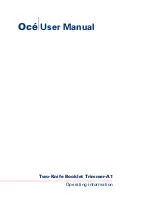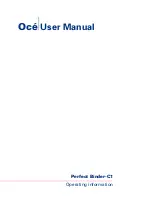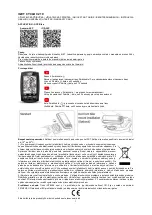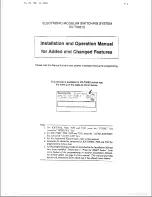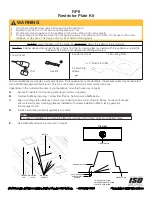
time to approximately 47 -49 mV/pH. Once the slope reads below the 47-49 mV/pH
range, install a new sensor to maintain accurate readings.
3.2.2
Recommended pH sensor standardization
For maximum accuracy, the sensor can be standardized in-line or with a process grab
sample after a buffer calibration has been performed and the sensor has been conditioned
to the process. Standardization accounts for the sensor junction potential and other
interferences. Standardization does not change the sensor's slope, but simply adjusts
transmitter's reading to match that of a known process pH.
Procedure
1. While obtaining a process solution sample (we recommend that you take the
sample close to the sensor), record the pH value that is shown on the transmitter
display.
2. Measure and record the pH of the process solution sample with another
temperature compensated, calibrated pH instrument. For best results, perform
standardization at the process temperature.
3. Adjust the transmitter to the standardized value.
3.3
Rosemount
™
389/389VP ORP calibration
Most industrial applications have a number of ORP reactions occuring in sequence or
simultaneously. There can be several components that are oxidized or reduced by the
reagents that are used. Theoretically, the ORP potential is absolute, because it is the result
of the oxidation/reduction equilibrium. However, the actual measured potential is
dependent on many factors, including the condition of the surface of the ORP platinum
electrode. Therefore the sensor should be allowed 1-2 hours to become
conditioned
to the
stream when first set up or after being cleaned.
WARNING
CORROSIVE SUBSTANCE
The solution used during the following check is an acid and should be handled with care.
Follow the directions of the acid manufacturer. Wear the proper protective equipment. Do
not let the solution come in contact with skin or clothing. If contact with skin is made,
immediately rinse with clean water.
Procedure
1. Make a temporary electrical connection between the sensor and the instrument.
2. Obtain a standard solution of saturated quinhydrone (PN R508-16OZ). To make this
solution, add a few crystals of quinhydrone to either pH 4 or pH 7 buffer.
Quinhydrone is only slightly soluble, but only a few crystals are required.
3. Immerse the sensor in the standard solution. Allow one to two minutes for the ORP
sensor to stabilize.
4. Adjust the standardized control of the transmitter to the solution value shown in
.
Calibration
Reference Manual
February 2019
00809-0100-3389
28
Rosemount 389/389VP
Содержание Rosemount 389
Страница 4: ...Contents Reference Manual February 2019 00809 0100 3389 4 Rosemount 389 389VP ...
Страница 10: ...Description and Specifications Reference Manual February 2019 00809 0100 3389 10 Rosemount 389 389VP ...
Страница 26: ...Install Reference Manual February 2019 00809 0100 3389 26 Rosemount 389 389VP ...
Страница 30: ...Calibration Reference Manual February 2019 00809 0100 3389 30 Rosemount 389 389VP ...
Страница 34: ...Maintenance Reference Manual February 2019 00809 0100 3389 34 Rosemount 389 389VP ...
Страница 38: ...Return of Material Reference Manual February 2019 00809 0100 3389 38 Rosemount 389 389VP ...
Страница 40: ...EC Declaration of Conformity Reference Manual February 2019 00809 0100 3389 40 Rosemount 389 389VP ...
Страница 41: ...Reference Manual EC Declaration of Conformity 00809 0100 3389 February 2019 Reference Manual 41 ...
Страница 42: ...EC Declaration of Conformity Reference Manual February 2019 00809 0100 3389 42 Rosemount 389 389VP ...
Страница 43: ...B China RoHS Table Reference Manual China RoHS Table 00809 0100 3389 February 2019 Reference Manual 43 ...
Страница 44: ...China RoHS Table Reference Manual February 2019 00809 0100 3389 44 Rosemount 389 389VP ...































